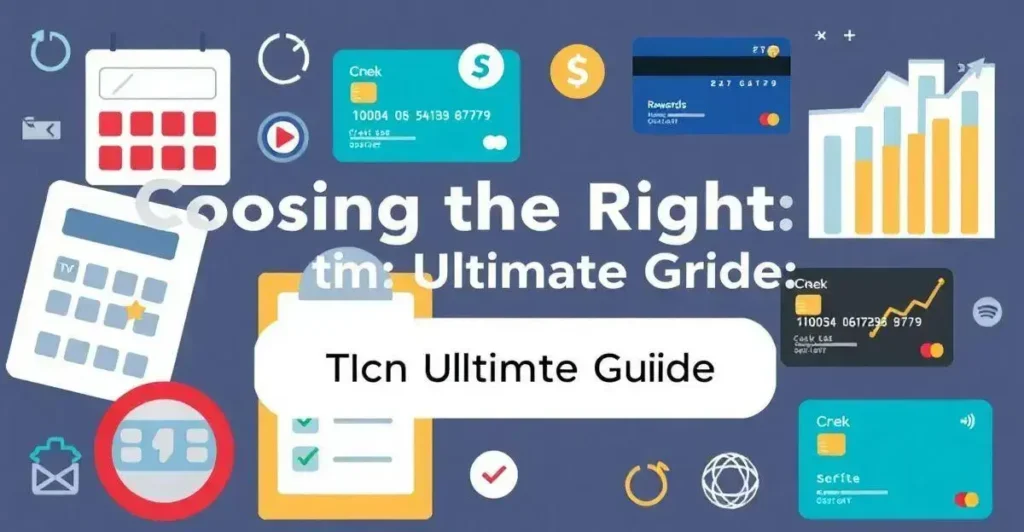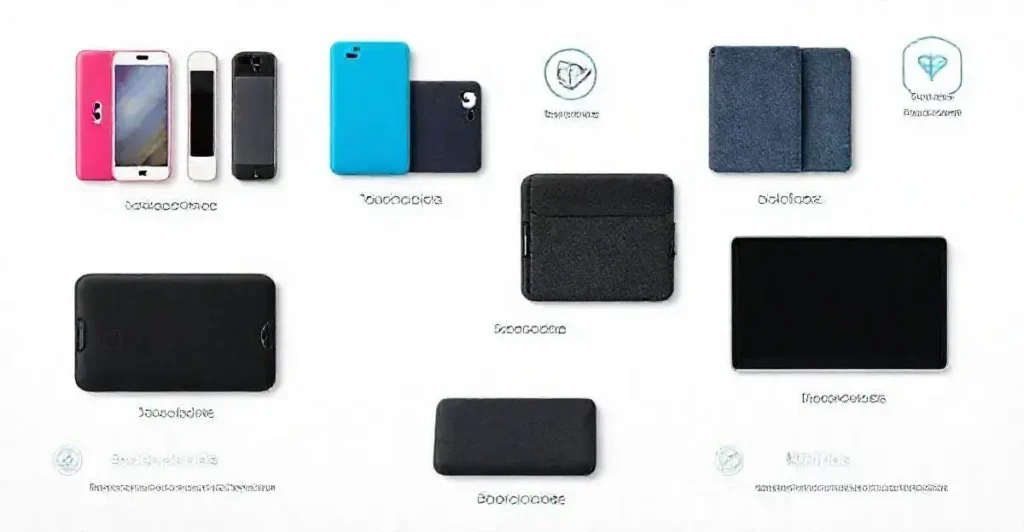How to Protect Credit Cards in Your Wallet should be a top priority to prevent fraud and financial loss. With the rise of digital threats and physical theft, taking the right precautions can make all the difference in keeping your money and personal information safe.
From RFID skimming to lost or stolen cards, there are multiple risks that can put your financial security in jeopardy. Knowing these threats and how to counter them will help you take control of your credit card safety with confidence.
Want to make sure your cards are fully protected? Keep reading to discover the best strategies for safeguarding your wallet and avoiding potential security breaches.
Understanding Credit Card Security Risks
Understanding credit card security risks is vital for protecting yourself from fraud and identity theft. Cards can be compromised in various ways, and knowing these risks helps in minimizing exposure.
Common Risks
One of the most prevalent risks is card skimming, a method where thieves use devices to capture the data from your card when it’s swiped. This can happen at ATMs and gas stations where skimmers can be easily installed.
Online Fraud
Online transactions also pose risks. Phishing scams trick users into giving their personal information through fake emails or websites. Always ensure that the website is secure and reputable before entering credit card details.
Lost or Stolen Cards
A lost or stolen card can lead to unauthorized transactions. If your card disappears, report it immediately to your bank to prevent any fraudulent activity. Make a habit of checking your wallet regularly.
Identity Theft
Identity theft involves using someone else’s personal information to open accounts or make purchases. Protecting personal data is crucial to avoiding this risk. Be cautious about sharing your information, particularly online.
Unsecured Networks
Using unsecured Wi-Fi networks can expose your credit card information to hackers. Avoid making transactions over public networks and consider using a VPN for added security.
Monitoring Financial Statements
Regularly reviewing your bank and credit statements is a good practice. Spotting suspicious activities quickly can prevent significant problems later. Make it a routine to check your transactions.
By being aware of these risks, you can take proactive steps to secure your credit cards and financial information. Remember, knowledge is your best defense against fraud.
Best Wallet Features for Protection
When it comes to protecting your credit cards, choosing the right wallet is key. Here are some of the best wallet features for protection that you should look for:
RFID Blocking Technology
A wallet with RFID (Radio Frequency Identification) blocking can prevent unauthorized access to your credit card’s information. These wallets have a special lining that blocks RFID signals from scanners, protecting your data from thieves.
Durable Material
Look for wallets made from high-quality materials such as leather, nylon, or reinforced fabric. A durable wallet will not only last longer but also provide better protection against wear and tear, keeping your cards safe.
Compact Design
A compact wallet encourages you to carry only what you need, reducing the risk of losing your cards. Less bulk means less chance of accidentally dropping it or being targeted by pickpockets.
Secure Closure Mechanism
Opt for wallets with reliable closure mechanisms, such as zippers, snaps, or magnets. A secure closure will keep your cards from falling out and enhance the overall safety of your wallet.
Multiple Card Slots
Having multiple card slots can help you organize cards better and keep them out of sight. Choose wallets with hidden pockets or compartments to further obscure your cards from potential thieves.
Location Tracking Feature
Some modern wallets come with location tracking technology. This feature allows you to keep track of your wallet through a smartphone app, helping you locate it if it gets lost or stolen.
Water Resistance
A water-resistant wallet can protect your cards from damage due to spills or moisture. This is particularly useful for those who often carry their wallet in unpredictable environments.
Personalization Options
Some wallets allow for personalization, such as engraved initials. Personalizing your wallet can make it feel more secure to you and deter theft, as it adds sentimental value.
How to Choose RFID-Blocking Wallets

Choosing RFID-blocking wallets is essential for protecting your credit card information. Here are key factors to consider when making your selection:
Material Quality
Look for wallets made from high-quality materials. Genuine leather, durable nylon, or reinforced fabrics often provide better protection and longevity compared to cheaper options.
RFID Technology Effectiveness
Not all RFID-blocking wallets are equally effective. Check if the wallet has been tested and certified to block RFID signals. This ensures that your card data cannot be skimmed by unauthorized devices.
Wallet Size
Consider how much space you need. A compact wallet is often easier to carry and can deter pickpockets, while a larger wallet may fit more cards but can become bulky.
Design and Style
Choose a design that you like. Wallets come in various styles, from traditional bifolds to modern minimalist designs. A wallet you enjoy using encourages you to keep it with you and secure.
Closure Type
Look at the closure mechanism of the wallet. Zippers and snaps provide more security than open wallets. Make sure the closure keeps your cards safe and secure.
Card Slots and Storage
Ensure the wallet has enough card slots for your needs. Wallets with multiple compartments help organize cards and keep them easy to access while still protecting them from damage.
Customer Reviews
Before purchasing, check customer reviews online. See what others have said about the wallet’s effectiveness and durability. This can give you insight into real-world performance.
Return Policy and Warranty
Consider the return policy and warranty. A good warranty indicates the manufacturer believes in their product. This can give you peace of mind in your investment.
Tips for Carrying Credit Cards Safely
Carrying your credit cards safely is very important to prevent theft and fraud. Here are some practical tips for carrying credit cards safely:
Use a Secure Wallet
Choose a wallet with RFID-blocking technology to protect your cards from electronic theft. A secure wallet will also have a good closure system to keep your cards safe.
Limit the Number of Cards
Carry only the credit cards you need. The fewer cards you have, the less risk of losing them or having them stolen.
Keep It Close
Always keep your wallet in a safe place, such as a front pocket or a zipped bag. This makes it harder for thieves to reach your wallet without you noticing.
Be Aware of Your Surroundings
Stay alert in crowded areas. Watch for suspicious individuals who may try to steal your wallet or distract you while someone else takes it.
Use Card Holders
Consider using a cardholder or protector for your credit cards. This added layer of protection can help prevent wear and tear and make it harder for others to see your card information.
Regularly Check Your Cards
Periodically check that you have all your cards with you. Make sure to familiarize yourself with what cards you carry regularly. This way, you can quickly notice if one is missing.
Personal Identification
Keep your identification and credit cards separate. This will reduce the risk of someone gaining access to all your information at once should your wallet be lost or stolen.
Stay Cautious with Transactions
When you use your credit card, be cautious in handling it. Always shield your PIN when using ATMs or card readers, and choose secure environments for online purchases.
Regular Monitoring of Your Credit Cards
Regularly monitoring your credit cards is crucial for maintaining your financial security. Here are some essential tips on regular monitoring of your credit cards:
Check Statements Frequently
Review your credit card statements at least once a month. Look for any unauthorized transactions or charges you don’t recognize. Prompt detection can help resolve issues quickly.
Set Up Alerts
Most card issuers offer alert systems to notify you of transactions. Enable transaction alerts via email or text for every purchase or when spending reaches a certain limit. This helps you track your expenses in real time.
Use a Budgeting App
Consider using a budgeting app that links to your credit card accounts. These apps can help you monitor spending habits and identify unusual activity on your cards.
Review Credit Reports
Check your credit report regularly. You are entitled to a free credit report once a year from each of the three major credit bureaus. This can help you identify potential identity theft early.
Monitor Your Credit Score
Keep an eye on your credit score as well. Many credit card companies offer free credit score monitoring. A sudden drop in your score could indicate issues that need to be addressed.
Know Your Responsibilities
Familiarize yourself with your rights and responsibilities regarding fraud. Understand how to dispute unauthorized charges and what your liability is in case of fraud.
Be Proactive with Identity Theft Protection
Consider enrolling in an identity theft protection service. These services can provide alerts for suspicious activity and help mitigate the impact of fraud if it occurs.
Keep Records Organized
Maintain organized records of all your transactions. Having a clear history can assist in any disputes or reviews with your credit provider. Regular organization can help you notice discrepancies more easily.
Steps to Take if Your Card is Lost

If you discover that your credit card is lost, acting quickly is essential to protect your finances. Here are the steps to take if your card is lost:
1. Stay Calm and Assess
First, stay calm. Check your surroundings to see if the card may have dropped nearby. Review your recent transactions to ensure you didn’t misplace it somewhere you visited.
2. Report the Loss
Contact your credit card issuer immediately. Most companies have a 24/7 hotline for lost or stolen cards. They can freeze your account and prevent unauthorized transactions.
3. Monitor Your Accounts
Keep an eye on your bank statements and online accounts after reporting the loss. This helps you catch any suspicious activity as soon as possible. Notify your bank about any charges you did not authorize.
4. Request a Replacement Card
Ask your issuer for a replacement card. Most issuers will send you a new card with a different number. Be sure to update any recurring payments linked to your old card.
5. Change Your PIN
If your card was lost and had a PIN, it’s wise to change it. This adds an extra layer of security to protect your finances.
6. Consider Identity Theft Protection
Look into identity theft protection services. They can help you monitor your personal information and quickly alert you of any potential fraud resulting from your lost card.
7. Update Your Records
Make sure all records are updated with your new card information. This includes subscriptions, services, and anyone else that charges your card regularly.
8. Keep a Record of the Incident
Document all actions taken after your card was lost. Maintain a log of communications with your bank and any transactions noted. This can be helpful for future reference.
Educating Yourself on Phishing Scams
Educating yourself on phishing scams is crucial to protecting your personal and financial information. Here are key points to enhance your knowledge about phishing scams:
What is Phishing?
Phishing is a fraudulent attempt to obtain sensitive information, such as usernames, passwords, or credit card details, by pretending to be a trustworthy entity. Phishing attacks often come through emails or fake websites that look legitimate.
Common Types of Phishing Scams
Common phishing scams include email phishing, where attackers send fraudulent emails that appear to be from trusted sources, and spear phishing, which targets specific individuals. Additionally, there are vishing (voice phishing) attacks conducted over the phone and smishing (SMS phishing) attacks that occur via text messages.
How to Recognize Phishing Attempts
To spot phishing attempts, look for generic greetings like “Dear customer” instead of using your name. Be cautious with emails that create a sense of urgency or demand immediate action. Suspicious links or unexpected attachments are also red flags.
Verify the Sender
Always verify the sender’s email address before clicking any links. Attackers can spoof email addresses to make them look like they come from a legitimate source. Check for typos or unfamiliar addresses.
Do Not Click Unfamiliar Links
If you receive an email with an unfamiliar link, do not click it. Instead, visit the official website directly by typing the URL in your browser. This ensures you are accessing the genuine site.
Report Phishing Attempts
If you encounter a phishing attempt, report it. Many companies have dedicated email addresses for reporting phishing. You can also report scams to government agencies like the Federal Trade Commission (FTC) or the Internet Crime Complaint Center (IC3).
Stay Educated
Keep yourself updated on the latest phishing trends. Follow cybersecurity blogs, attend workshops, or take online courses to strengthen your knowledge about online safety.
Use Security Measures
Implement security measures like two-factor authentication for your online accounts. This adds an extra layer of protection, even if your password is compromised.
Using Mobile Payment Apps Securely
Using mobile payment apps securely is essential to protect your financial information. Here are some important tips for using mobile payment apps securely:
1. Choose Trusted Apps
Always download and use trusted mobile payment applications. Stick to well-known platforms, and check user reviews and ratings before installation.
2. Keep Your App Updated
Regularly update your mobile payment apps. Updates often include important security enhancements that protect against vulnerabilities and potential threats.
3. Use Strong Passwords
Create a strong password for your mobile payment app. Use a mix of letters, numbers, and symbols. Avoid using easily guessable passwords, and do not share them with anyone.
4. Enable Two-Factor Authentication
Whenever possible, enable two-factor authentication (2FA). This adds an additional layer of security by requiring a second form of verification, such as a text message code, before accessing your account.
5. Be Cautious on Public Wi-Fi
Avoid making financial transactions when connected to public Wi-Fi networks. Instead, use your mobile data or a trusted private network to stay secure.
6. Monitor Transactions Regularly
Keep a close eye on your transaction history. Regularly review your mobile payment app for unrecognized or suspicious charges. Report any unauthorized transactions immediately.
7. Log Out After Use
Always log out of your mobile payment app after each use, especially if you are using a shared or public device. This helps protect your account from unauthorized access.
8. Be Aware of Phishing Attempts
Stay alert for phishing scams targeting your mobile payment information. Never click on unfamiliar links or provide sensitive information via email or messages.
Protecting Your Credit Cards: Essential Takeaways
In today’s digital age, protecting your credit card information is more important than ever. By understanding credit card security risks and the best wallet features for protection, you can safeguard your finances.
Choosing RFID-blocking wallets and being aware of how to carry your cards safely are vital steps. Regular monitoring of your accounts helps catch unauthorized transactions early, while being prepared to act if your card is lost ensures your information remains secure.
Educating yourself about phishing scams and using mobile payment apps securely empowers you to make safe financial choices. With these strategies and knowledge, you can confidently navigate your financial transactions while minimizing risks.
Ultimately, a proactive approach to credit card protection not only enhances your security but also gives you peace of mind.


